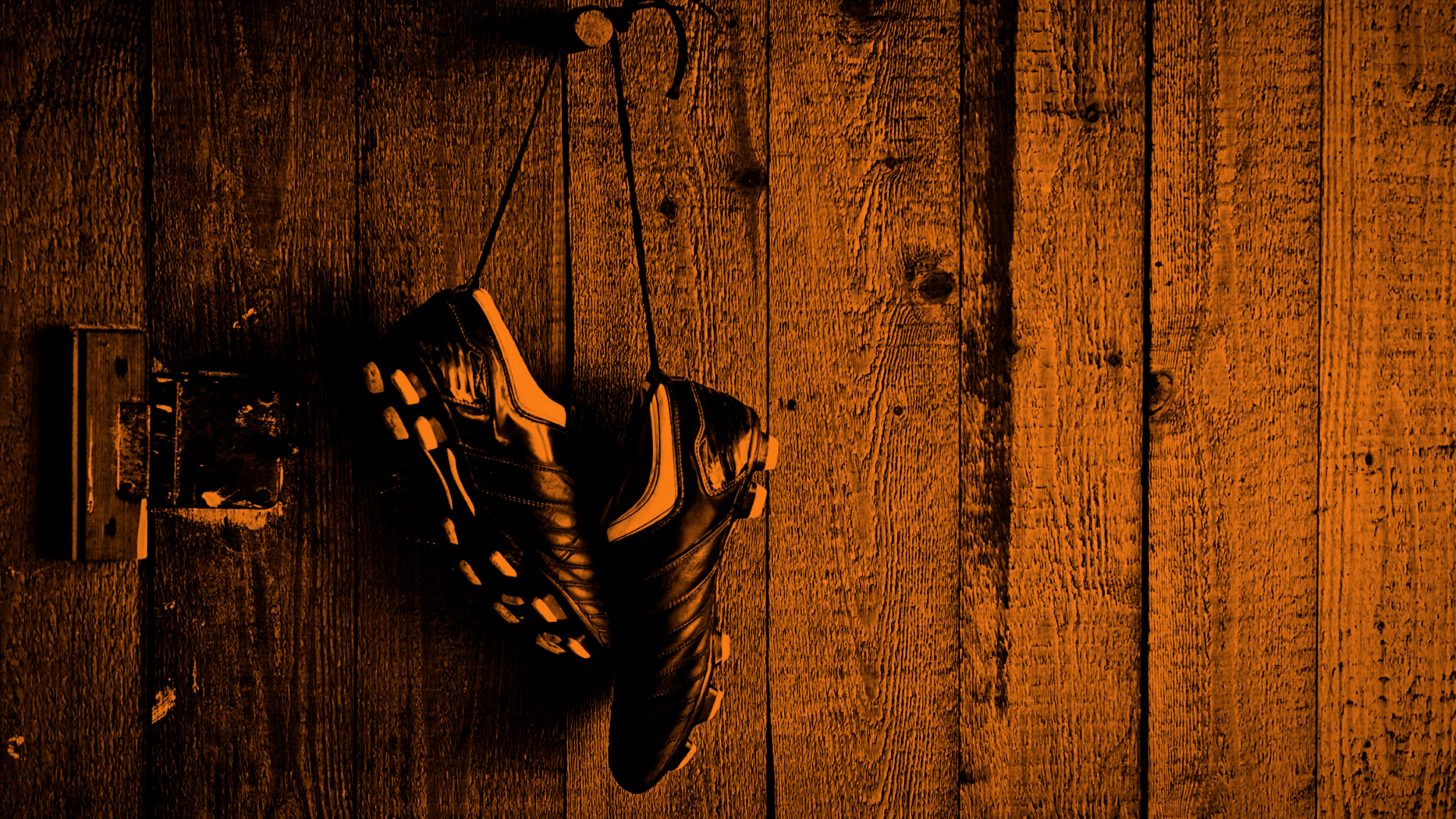


A podiatrist working with footballers can help with the selection of boots that allow players to perform to their best, while also minimising injury risk and maximising comfort. Here’s some tips to bear in mind.
As football finals near for a variety of codes, we’ll get to see the best-of-the-best go on long searching runs, sprint, pivot, rapidly change direction, accelerate, and decelerate….all while executing football skills. We will also see an array of different football boots worn by players, suggesting there is no one ideal boot for all.
So, let’s look at footwear features that should be considered when selecting football boots.
The first consideration should be the soleplate, which mainly relates to the stud design. Boots can be broadly grouped as ‘soft ground’, ‘firm ground’ and ‘artificial ground’ boots.
In general, surface traction increases with long studs (such as screw ins) and with bladed and chevron style studs, while shorter and rounder studs tend to have lower traction.
Increased traction is desirable for performance, such as changing direction, while ‘too much’ traction could result in a boot failing to release when rotating…possibly increasing the risk of injury. When players are returning from ACL and syndesmosis injuries, a boot with a lower rotational traction is often desirable – so consider shorter and rounder studs in this situation, as they are more likely to release with rotation.
There are a variety of upper materials used in football boots. Leather has historically been a popular upper material due to the comfort and durability it provides. Leather is a great choice if a boot will need to stretch and shape to the player foot, such as when a player has a wide foot or if they have digital deformities. Calf leather is mostly used, while premium boots may use kangaroo leather (also called ‘k-leather’) as it is approximately 1/3 thinner than calf leather, and provides a lighter and more conforming material which can improve ball ‘touch’.
Synthetic and knitted boots are growing in popularity. A major advantage of synthetic boots is they are often lighter than leather boots, and, unlike leather, they will not absorb water and become heavy in wet conditions. Synthetic materials also won’t stretch much, which is great if the boots fit well when first worn as they won’t lose their shape, but less than ideal if the player requires the boot to mould to their feet over time.
Most football boots do not have a midsole. This is because most boots are designed for the world game of football (soccer), as many players prefer to be close to the ground to assist with agility, ball-control, and to minimise boot weight.
Some boots, however, do have a midsole. The addition of a midsole adds weight to boots, but as foams are getting lighter, this is becoming less of a concern for players. Some midsoles are full-length which provides cushioning in the heel and forefoot, while others will only have a midsole that ends just prior to the forefoot. Boots with midsoles typically have a built-in heel lift that can range from 5 to 10 millimetres. An elevated heel can be beneficial if a player has a history of achilles and / or calf issues, anterior impingement of the ankle, or calcaneal apophysitis in youth footballers. The elevated heel is similar to what we see in most running shoes, so if a player is new to football, it may also help with their transition to football boots.
If a boot doesn’t have a midsole, ensure the sock liner/insole is well cushioned to provide comfort. If foot orthoses or a heel lift will be fitted to the boot, then a removable sock liner is highly preferable to allow the orthoses to be more easily fitted, without changing the fit of the boot too much.
In recent years, we have seen the emergence of laceless boots. Laceless boots may appeal for a variety of reasons, including their sleek aesthetics, plus they are easy to put on and take off, and they reduce the risk of lacing irritation on the dorsum of the foot. From a performance perspective, laceless boots have been proposed to improve ‘touch’ when controlling, passing, and striking a soccer ball.
However, as laceless boots cannot be adjusted like a laced boot, they tend to be narrower to ensure a secure fit, so they will not suit all foot shapes, particularly wider feet. They also lack the lockdown feel that laced boots can provide. So, if a player likes a secured lockdown feel, has a wide foot, or likes to adjust the fit of their boots throughout a game, then they should generally select a boot with laces.
A firm heel counter can assist in a secure heel fit and can offer some protection from direct trauma. However, if a boot has a firm heel counter, the inner lining should be well padded to minimise heel irritation, which can cause blistering or aggravate any bony prominences, bursas, or achilles issues. Some boots have an external heel counter (such as it sits external to the upper) in an attempt to maximise heel protection from external impacts and improve internal heel comfort.
Comfort should be a priority when selecting football boots. Regardless of all the features we have covered in this article, if the boots are not comfortable, then they will reduce performance and enjoyment of the game.
Ensure boots fit well and match the shape of the players feet. Players with wide feet often prefer leather boots with a wider sole plate, while narrower feet are generally well catered for with many narrow boot options. Foot orthoses or heel lifts should be fitted to the boots when trying them on. Players should also wear their football socks when trying on boots and replicate game day movements to ensure the boots are comfortable and there is minimal slippage within the boot.
In summary, you will need to consider individual needs of the footballer, including playing surface, football code, shoe fit, preferred feel, footwear features the player (and podiatrist) prioritise, and selecting boots that complement the player’s game, accounts for their injury history, and what will keep them comfortable.
Enjoy the football finals!
© Copyright 2021 The Australian Podiatry Association
